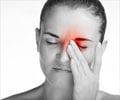Neurovascular dysregulation may explain link between migraine and hot flashes, as well as their association with heart disease. This association may help identify women who are at risk for more severe hot flashes in midlife.
- Women who have a history of migraines suffer more severe hot flashes
- Hormones are the reason why women get more migraines than men
- Neurovascular dysregulation could be the reason for migraines and hot flashes
Migraine has a strong female predominance affecting roughly 20% of women. Hormones are believed to play a significant role in triggering migraine, helping explain why women experience more migraine-related symptoms compared to men. Migraines are also associated with cardiovascular events and mortality in women much the same way that vasomotor symptoms (hot flashes) appear to be a biomarker of heart disease.
A prior study investigated the association between migraines and hot flashes and found that a history of migraines predicted an increased frequency of hot flashes in women during the menopause transition.
This new study coming out of the Mayo Clinic continues that research and further examines a potential link between a history of migraines and hot flashes, as well as their possible association with an increased risk of heart disease.
This new study involved more than 3,300 women, 27% of whom reported a history of migraine. Study participants were, on average, 52.8 years old, predominantly white (94.5%), educated with at least some college (93%), partnered (84.9%), and postmenopausal (66.6%).
In addition, the study found that, while women with low back pain also had worse menopause symptoms, in general, they were no more likely to have experienced severe/very severe hot flashes, thus confirming the specificity of the link between hot flashes and migraines.
“Given the high prevalence of migraine in women, this association may help identify women who are at risk for more severe hot flashes in midlife. Further study is needed to determine whether the combination of migraine history and hot flashes in midlife predict greater heart disease risk than either alone and whether these female-specific factors could be used to enhance the accuracy of CVD risk calculations for women.”
Source-Eurekalert
















